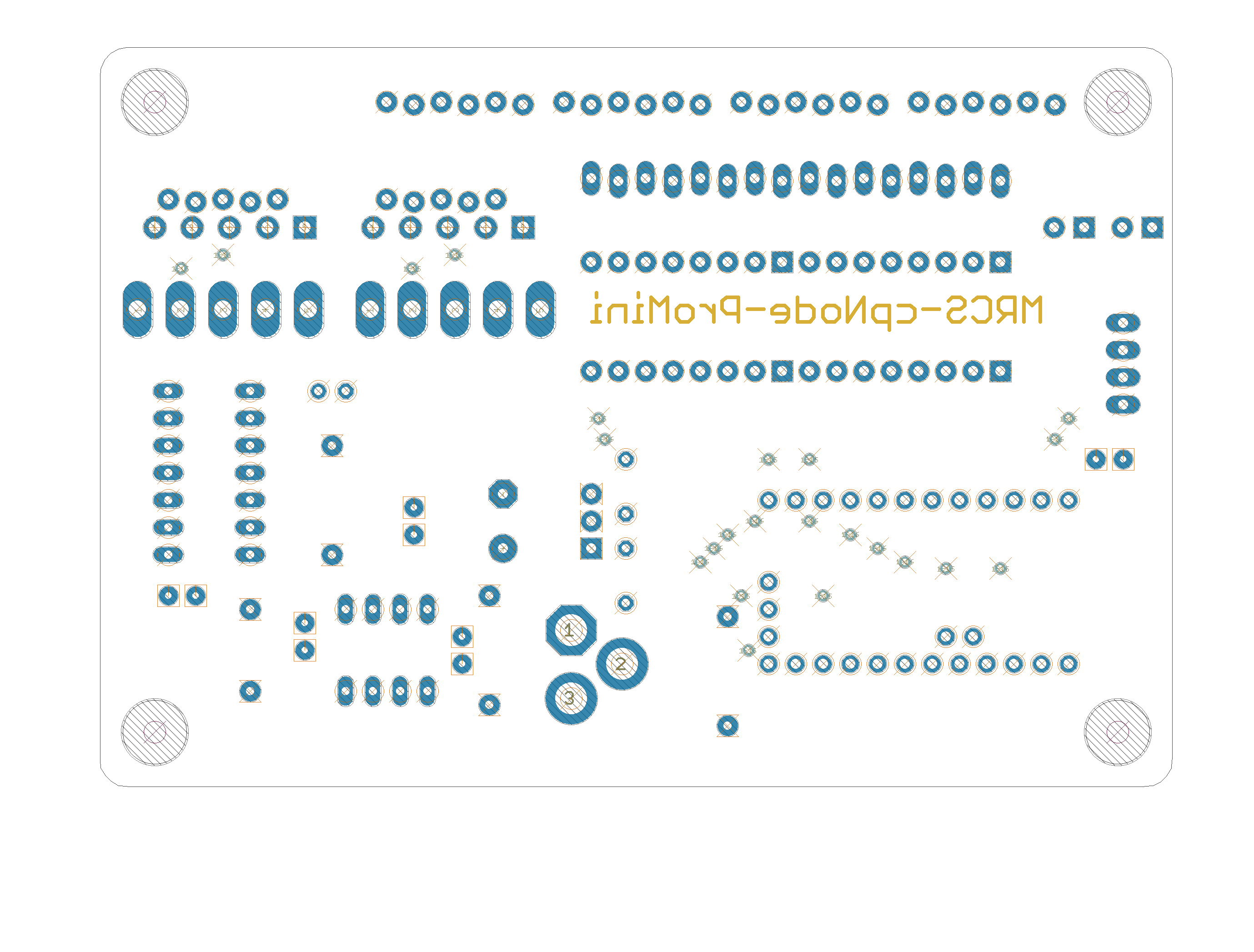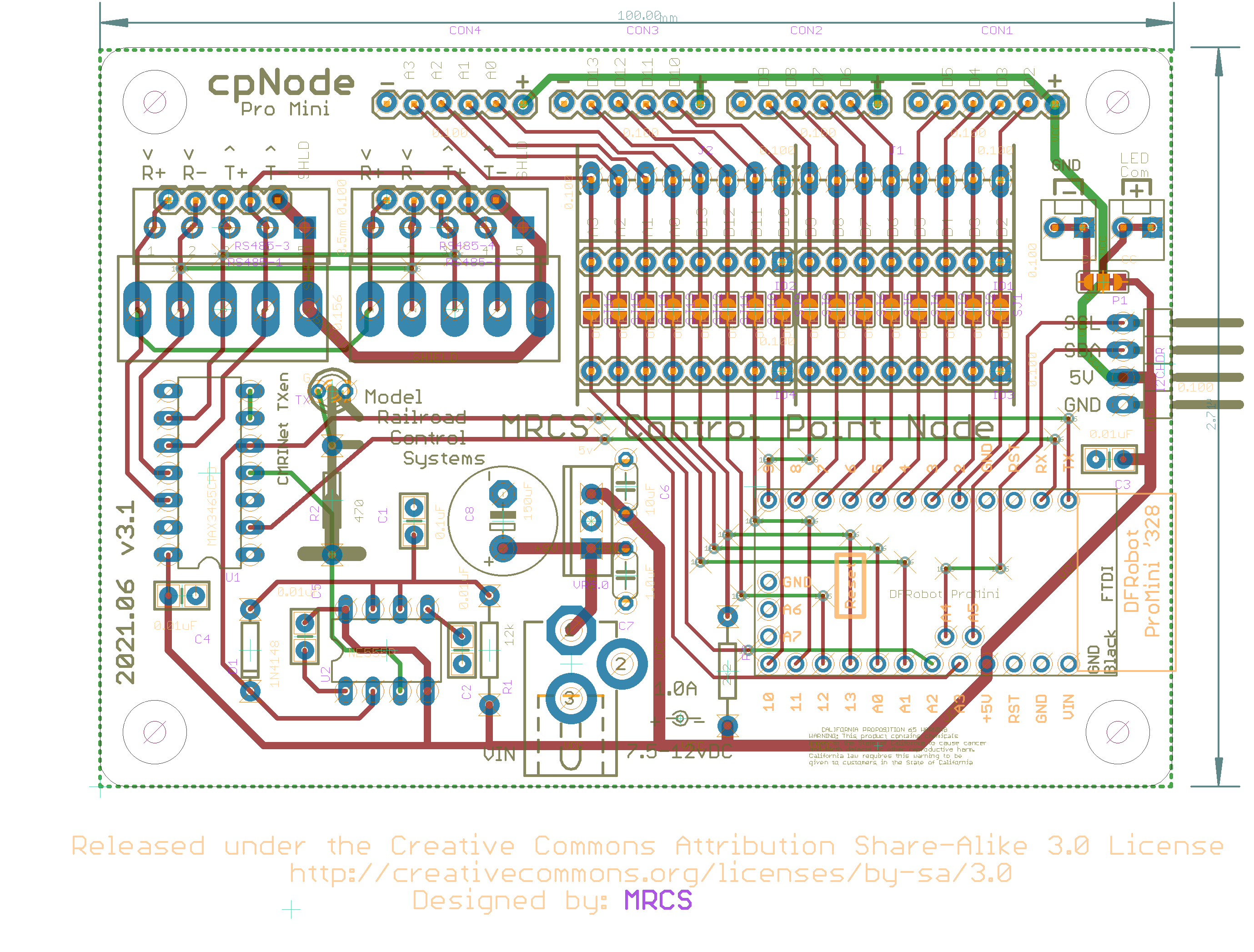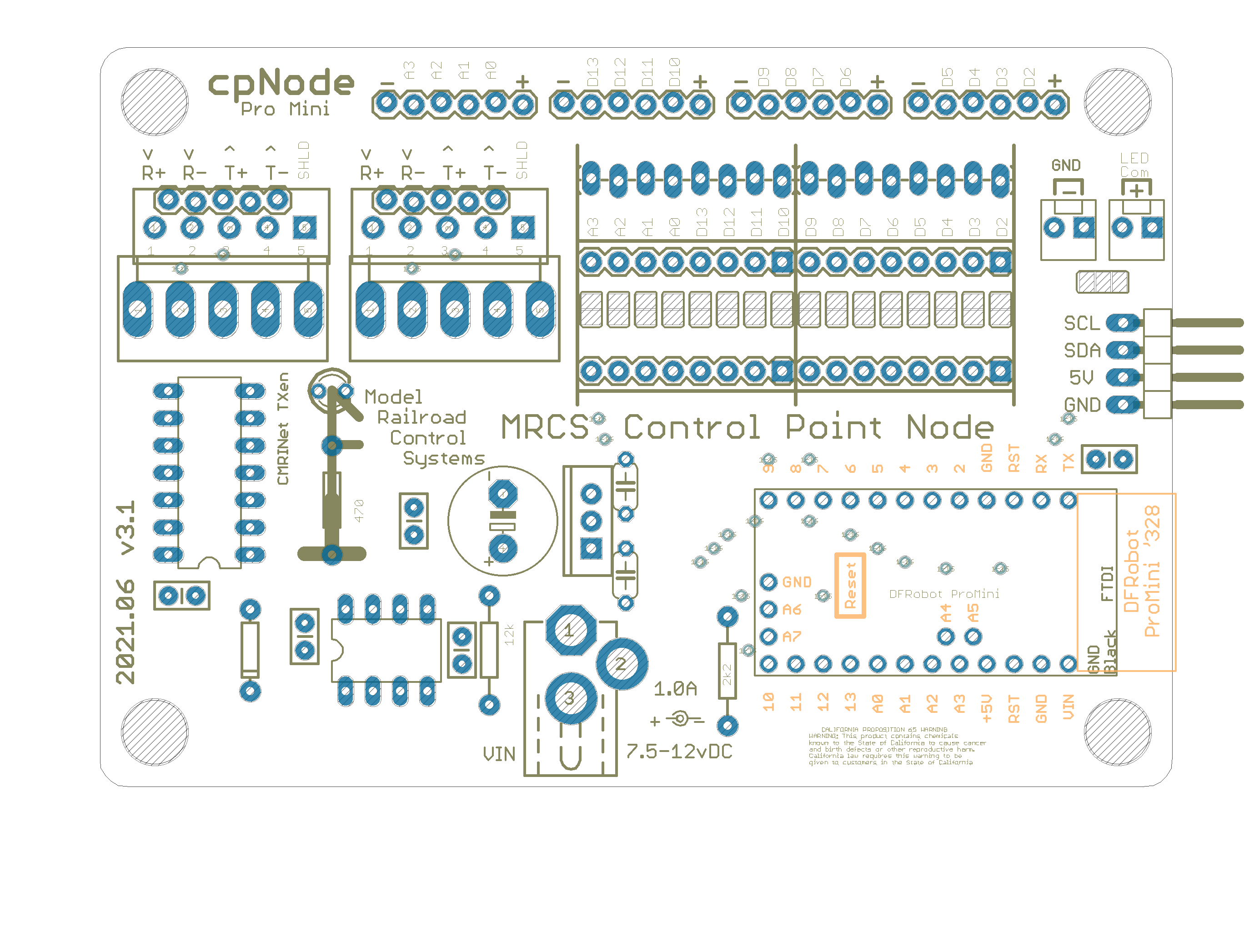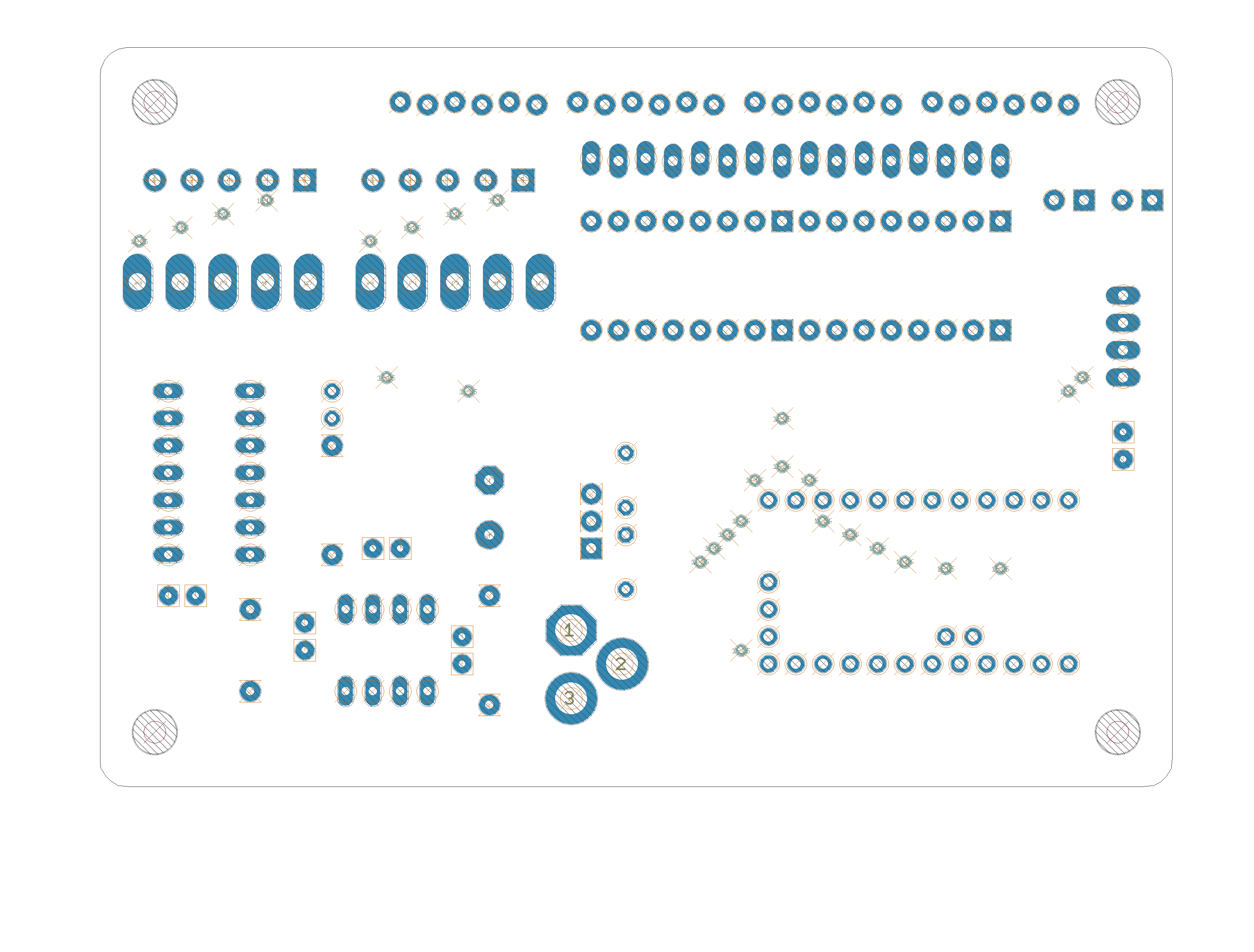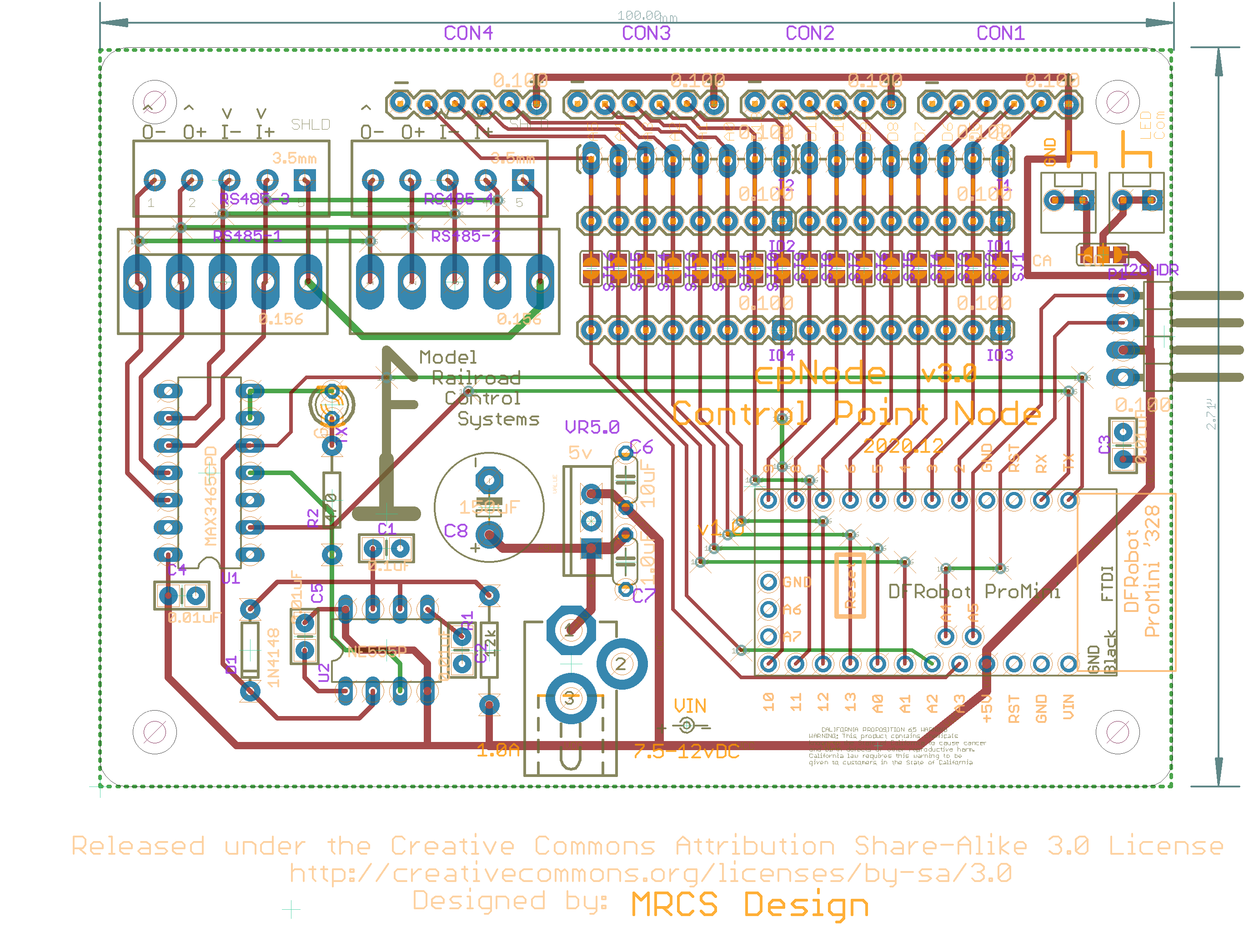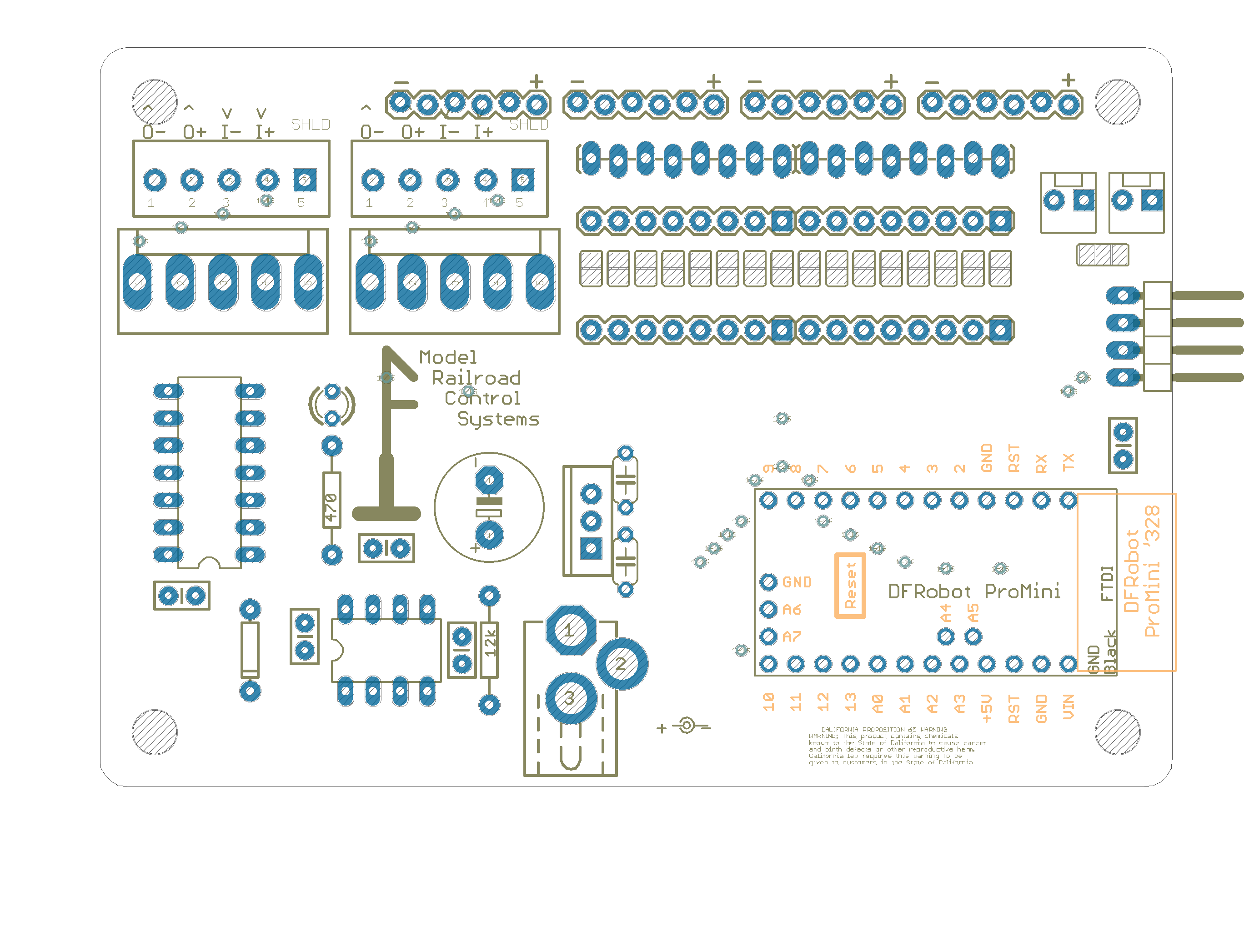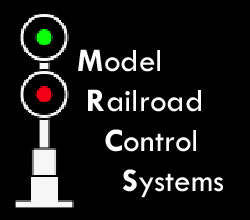
MRCS-cpNode-ProMini
Arduino ProMini based CMRI node in 2.71" form
cpNode with a ProMini instead of a BBLeo
License: Creative Commons Attribution-NonCommercial-ShareAlike
cpNode and I/O expander (IOX) boards have been updated to version 3.0. The Original BareBones BBLeo is EOL and Unavailable, so this respin is done with a ProMini, which does not provide an independent USB serial interface.
- Rev 3.0 boards are NOT backward compatible with previous versions. Software changes ARE needed.
What does a cpNode do? cpNodes provide input and output (I/O) ports which connect to LEDs for signals, push buttons, turnout motors, block detectors, and other devices to a central computer for controlling model railroads. cpNodes may also be used as standalone controllers for staging, crossings and interlocking plants. A cpNode has:
- 16 I/O lines with solder pads for LED limiting resistors
- Screw terminal blocks or solder pads to connect external devices - see configurations below
- CMRInet RS-422/485 Network Interface. CMRInet is now NMRA Layout Control Specification S9-10
- I2C interface for adding Input/Output Expander (IOX) boards for more i/o ports
- All the i/o needed to control one end of a CTC siding, just add signals and detectors and switch motor drivers
- Female headers to receive a BB-Leo (Arduino) processor available from Modern Device, use coupon code “cpnode” or order the cpNode LE option
- I/O is configured in 8 bit groups, providing up to 144 lines when fully expanded with IOX16s and/or IOX32s
- Use cpNodes as small, economical, CMRI nodes as is or customize the code to support applications requiring local intelligence
- Standard “Sketch” (Arduino program) is compatible with JMRI or traditional CMRI BASIC/Visual Basic development tools
Download MRCS-cpNode-ProMini.SMD-parts -
Download MRCS-cpNode-ProMini -
Download MRCS-cpNode-ProMini -
MRCS-cpNode-ProMini Version 1.1
Not built
cpNode with a ProMini instead of a BBLeo
License: Creative Commons Attribution-NonCommercial-ShareAlike
cpNode and I/O expander (IOX) boards have been updated to version 3.0. The Original BareBones BBLeo is EOL and Unavailable, so this respin is done with a ProMini, which does not provide an independent USB serial interface.
- Rev 3.0 boards are NOT backward compatible with previous versions. Software changes ARE needed.
What does a cpNode do? cpNodes provide input and output (I/O) ports which connect to LEDs for signals, push buttons, turnout motors, block detectors, and other devices to a central computer for controlling model railroads. cpNodes may also be used as standalone controllers for staging, crossings and interlocking plants. A cpNode has:
- 16 I/O lines with solder pads for LED limiting resistors
- Screw terminal blocks or solder pads to connect external devices - see configurations below
- CMRInet RS-422/485 Network Interface. CMRInet is now NMRA Layout Control Specification S9-10
- I2C interface for adding Input/Output Expander (IOX) boards for more i/o ports
- All the i/o needed to control one end of a CTC siding, just add signals and detectors and switch motor drivers
- Female headers to receive a BB-Leo (Arduino) processor available from Modern Device, use coupon code “cpnode” or order the cpNode LE option
- I/O is configured in 8 bit groups, providing up to 144 lines when fully expanded with IOX16s and/or IOX32s
- Use cpNodes as small, economical, CMRI nodes as is or customize the code to support applications requiring local intelligence
- Standard “Sketch” (Arduino program) is compatible with JMRI or traditional CMRI BASIC/Visual Basic development tools
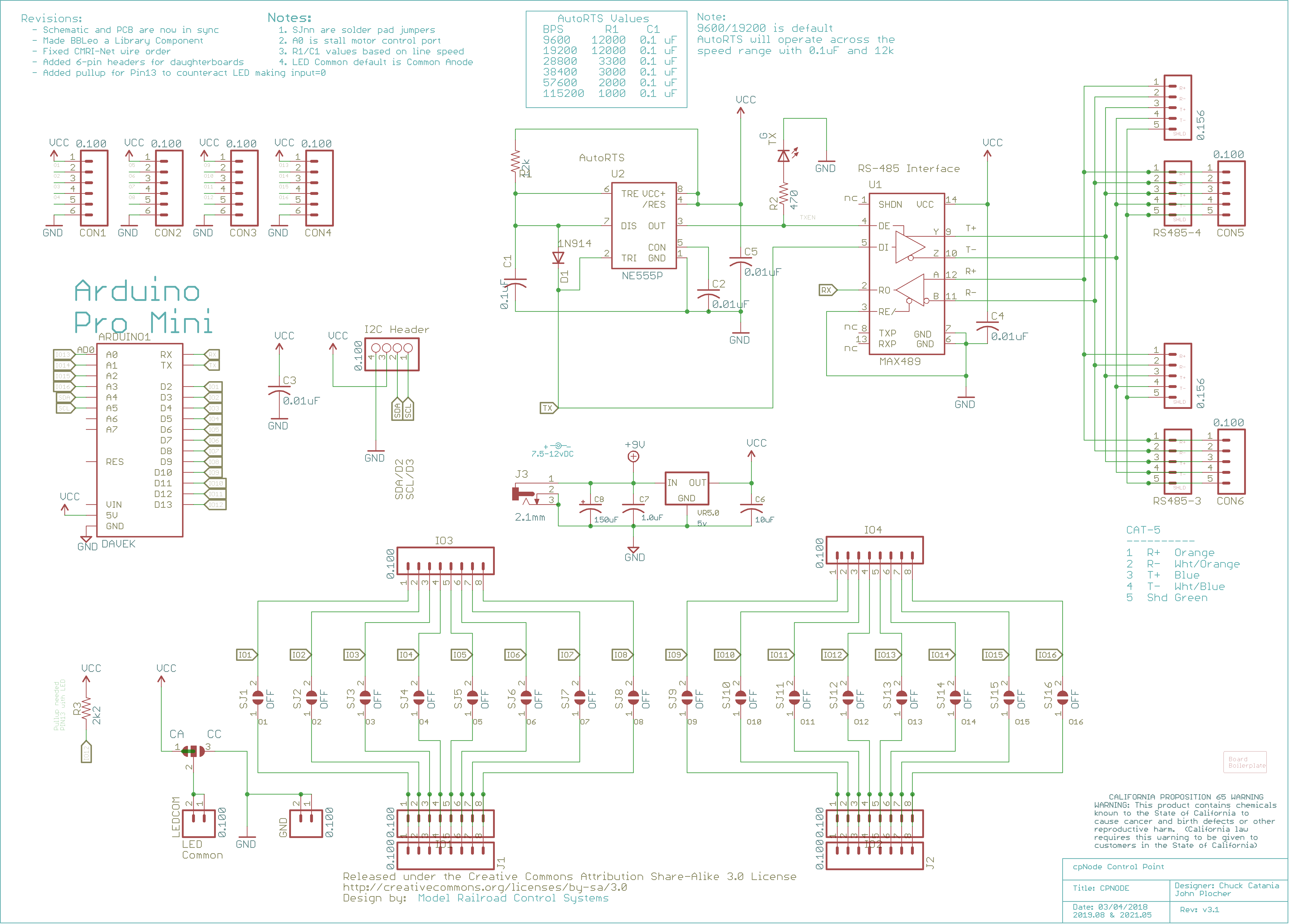
|
|
|
UNPUBLISHED
MRCS-cpNode-ProMini Version 1.0
Not built
cpNode with a ProMini instead of a BBLeo
License: Creative Commons Attribution-NonCommercial-ShareAlike
cpNode and I/O expander (IOX) boards have been updated to version 3.0. The Original BareBones BBLeo is EOL and Unavailable, so this respin is done with a ProMini, which does not provide an independent USB serial interface.
- Rev 3.0 boards are NOT backward compatible with previous versions. Software changes ARE needed.
What does a cpNode do? cpNodes provide input and output (I/O) ports which connect to LEDs for signals, push buttons, turnout motors, block detectors, and other devices to a central computer for controlling model railroads. cpNodes may also be used as standalone controllers for staging, crossings and interlocking plants. A cpNode has:
- 16 I/O lines with solder pads for LED limiting resistors
- Screw terminal blocks or solder pads to connect external devices - see configurations below
- CMRInet RS-422/485 Network Interface. CMRInet is now NMRA Layout Control Specification S9-10
- I2C interface for adding Input/Output Expander (IOX) boards for more i/o ports
- All the i/o needed to control one end of a CTC siding, just add signals and detectors and switch motor drivers
- Female headers to receive a BB-Leo (Arduino) processor available from Modern Device, use coupon code “cpnode” or order the cpNode LE option
- I/O is configured in 8 bit groups, providing up to 144 lines when fully expanded with IOX16s and/or IOX32s
- Use cpNodes as small, economical, CMRI nodes as is or customize the code to support applications requiring local intelligence
- Standard “Sketch” (Arduino program) is compatible with JMRI or traditional CMRI BASIC/Visual Basic development tools
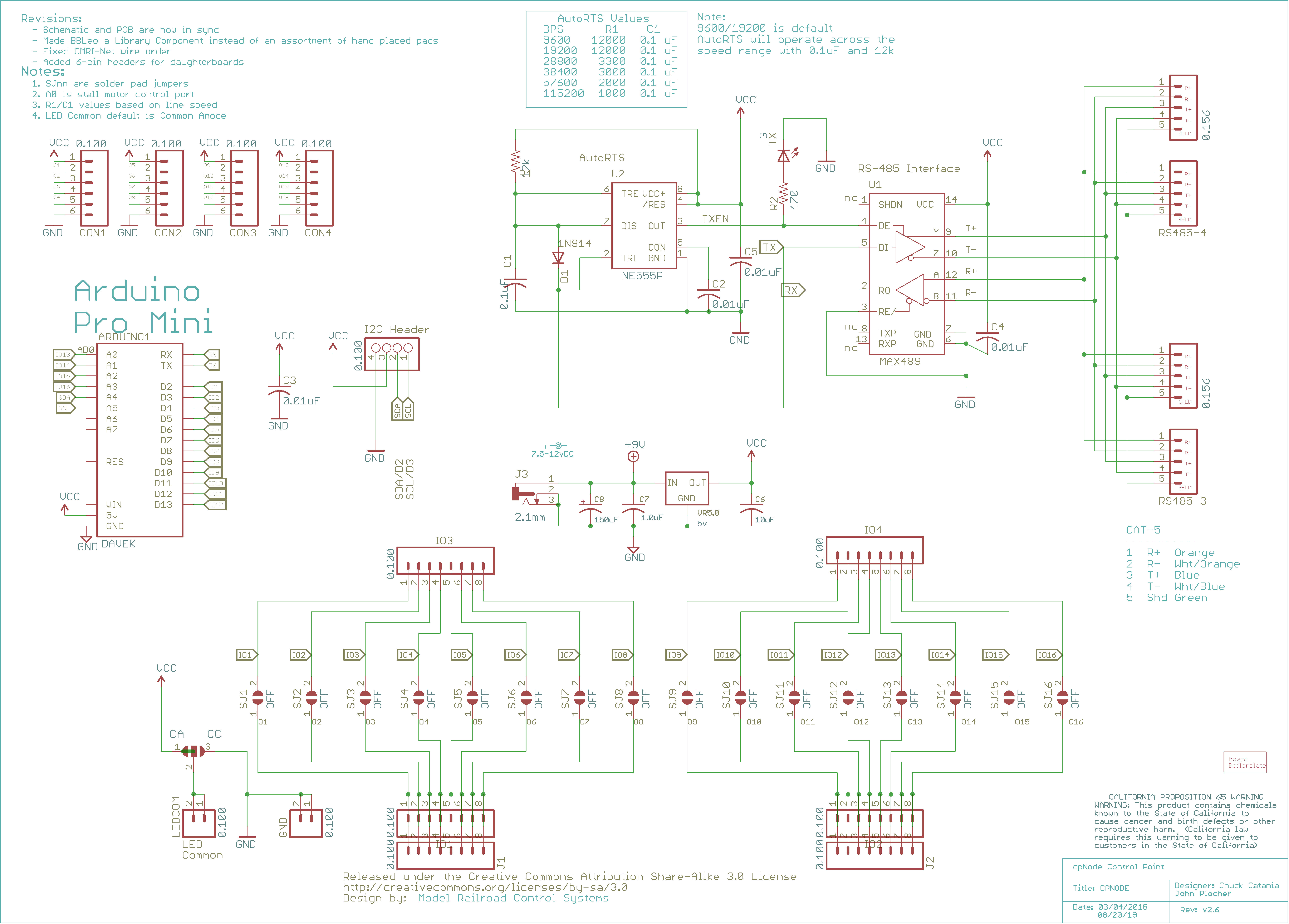
|
|
|
UNPUBLISHED
This technical documentation is licensed under the Creative Commons Attribution-NonCommercial-ShareAlike
